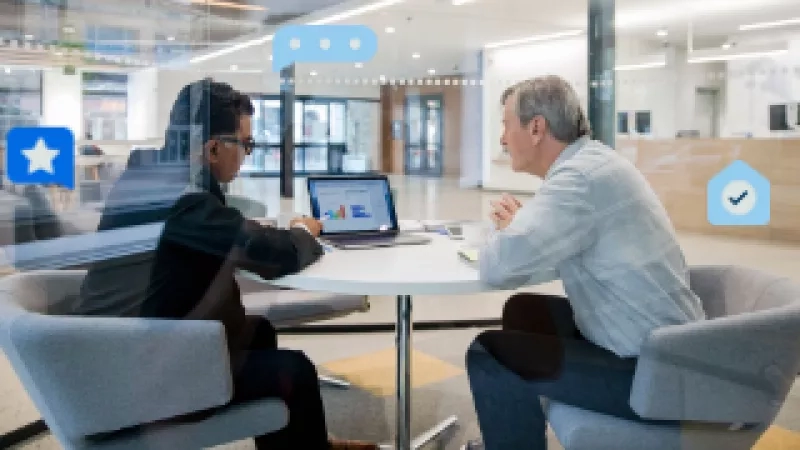What's your sales strategy when it comes to how many contacts to engage with for each of your sales deals? One? Two? If your typical number is any less than six, it’s likely that you’re missing some of the key stakeholders necessary to close a group business deal.
According to recent research by CEB, the average number of customer stakeholders involved in a B2B purchasing decision is 6.8 — up from 5.4 in 2014. With so many people involved in each purchasing decision for events, it is essential for top sales reps to identify and engage with all the necessary stakeholders as early in the process as possible when pitching to win group business.
Finding and making contact with all the people and planners who are involved with a purchase decision is often more complicated than it first appears. Job titles vary greatly between different organizations. You also may find that your contacts don’t anticipate all of the people who need to be involved in a large-scale purchase, or aren’t used to speaking with sales teams directly. To complicate matters further, some departments don’t understand the role of other departments, and therefore misjudge when to bring their colleagues into the conversation.
Rather than relying on imperfect information and a single contact within an organization, you can drive the process and move things forward by taking a leadership position, bringing all of the event planning stakeholders together. With the right mix of tact, appropriate qualifying questions and careful listening, you will be able to chart and understand complex stakeholder landscapes within any organization.
In this article, we’ll show you how to identify key stakeholders in your group business sales process and manage the process of building consensus to close more deals.
How to map event sales decision makers to win more business
Step 1: Identify all of the key stakeholders in the deal.
By identifying and engaging all the stakeholders in your deal, you can:
Find wider opportunities than you had otherwise considered, including business with other parts of an organization
Speed up the sales cycle by uncovering potential roadblocks earlier in the process
Increase your close rate by building buying consensus across all stakeholders
Protect your relationships against personnel transfers and high turnover rates
Lead the consensus building process and provide appropriate information for everyone on the team
In the hotel sales process, key stakeholders include decision makers, influencers, gatekeepers, and users. Each of these people will have different ways of interacting with your sales team, as well as different motivations, needs, pain points, and areas of focus.
Check out the Hotel Manager's Guide to Restarting Group Business
Identify the approver who is the decision maker
In every deal, there will be at least one final approver — the person (or the final approval group) who must say yes before the project can proceed, and who sometimes may not have had any obvious involvement in the detailed decision-making process up to that point. Any time a prospect describes someone who needs to “sign off” on the deal, make a note of who that person is. They may not be the final approver, but they are at least one piece of the approval puzzle.
You can also look to past deals in similar organizations to see who the final approver was, and then use that information to ask relevant questions for the current deal. You may say something like, “When we’ve hosted groups like yours in the past, we’ve needed final approval from the Head of Operations. Is that part of your process too?” This type of approach gets you the answers you need while providing an opportunity to talk about positive experiences groups like theirs have had in the past.
Keep in mind that the decision maker holds the purse strings, but may not ever have direct experience with the events or group stays that you are booking. Their motivations will often be financial, and business outcomes should be highlighted first in conversations with them. They will be deciding if the investment is worth it, and whether your property aligns with their goals for the company.
How to win them over: Appeal directly to these stakeholders by highlighting the return on investment and how your values align with theirs.
Recognize who the influencers on the sale are
The influencer is often the employee who is tasked with researching the event or group travel required for the company. They don't have the budget or authority to make a final decision, but they do have the power to influence the decision maker. The influencer is usually your main point of contact at the company, and they'll pull in other stakeholders as needed throughout the process.
Give your influencers all the information and sales collateral they need to convince others on their team, even if you’re not there to help. Influencers will often pass on information without the context and explanations you would, so make sure the deliverables speak for themselves.
Keep in mind that influencers often consider themselves to be decision makers because they will make a decision about what to recommend to their executive team. While they are really the “recommender” in that process, they're still extremely valuable to the sale.
How to win them over: Acknowledge their value as a trusted partner while also finding out what happens in the sales process after they make their recommendation.
Label the sales gatekeepers
A gatekeeper is someone who has the potential to veto or delay the decision, or who can block access to a decision maker. These stakeholders show up in executive assistant roles for key decision makers, but that’s not the only place you'll find them. You may also encounter gatekeepers in legal, technical, procurement, or contractual capacities who will need to approve a decision before it closes.
Gatekeepers can be valuable allies, and it's a mistake to ignore or try to work around them.
How to win them over: Ask meaningful questions early on about the gatekeeper’s role, how they’re involved in decisions, and how they work with the decision maker. This will give you valuable insights into the process and show the gatekeeper that you see them as a valuable part of the solution.
Make it clear who the end users in the sale are
End users are the people who will experience your property directly, either by staying with you as part of a group, setting up and running the event, or attending the event. Don’t assume that guests are the only end users — anyone who interacts with your staff after the close of the sale is likely an end user, including group organizers, travel coordinators, and the organization’s internal event planning staff.
End users typically have more experience with the type of event or group experience you’re selling than any of the other stakeholder groups. Your goal should be to show how your property can make their lives easier and provide the experience they're looking for.
How to win them over: End users will place value on hearing about the experiences of other end users, so consider using referrals or testimonials to persuade these stakeholders.
Point out the invisible stakeholders
Beyond the common stakeholders, there are also “Invisible stakeholders” who could have a material — and sometimes critical — impact on the decision. To make sure you’re speaking with everyone who may be relevant, ask these important questions during your sales conversations:
Who is driving this initiative?
Who else do you need to speak to for final sign off?
Who will be most impacted by this decision?
Who has been involved in similar decisions in the past?
Who are you going to take this information to next?
Are there any potential roadblocks in front us before project sign-off?
Step 2: Map and understand how all of the stakeholders work together.
Your challenges don’t stop at identifying all of the stakeholders. Keeping the account understandable and communicating the relationships among your sales team can also be challenging, and is an essential step for building consensus. If your process lacks consistency or clarity, you will lose key details and put the overall deal at risk.
Having a full picture of the organization and how the pieces of the puzzle fit will give you the clarity you need to move forward with purpose. Look at past deals and the titles of stakeholders involved, as these roles may be involved in similar sales in the future.
Any effective assessment of the stakeholder group needs to take into account a number of factors, including:
The stakeholder’s role in the decision
Their influence over the decision
Their attitude towards you and your product
Their top business priority and top decision factors
Your product’s key value to them
As you map out the stakeholders and how they relate to each other, try to keep these factors in mind. You may find you can produce information and deliverables that will engage and persuade a few stakeholders if you can see where their values and priorities align.
Step 3: Build consensus and close the deal.
One of your key roles with your group of stakeholders is building consensus. You can help bring all the key stakeholders together and push towards a positive decision by:
Avoiding over-personalization or presenting value propositions with a narrow focus. The best way to build customer consensus isn’t to do a better job of connecting individual customer stakeholders to your solution, but to more effectively connect customer stakeholders to one another. Try to create a shared language when discussing the value your solution provides, so that conversations about goals and needs will go smoothly even when you’re not in the room.
Make sure to achieve consensus for the approach and the solution first, before jumping to decisions about your property in particular. You need to ensure everyone agrees on what they’re looking for at a high level before narrowing down to specifics.
Help stakeholders see where all their interests and needs align, and then how your solution fits those interests and needs.
Equip stakeholders early in the process with the tools they need to push the sale forward such as one-pagers, ROI calculators, and similar testimonials. Create a sheet they can use to record objections they hear internally, so you can help them respond and reposition your venue as the perfect fit. Influencers and recommenders are often not salespeople themselves, so they will need your help to convince others within their organization about your property’s value.
Delight key sales decision makers
By identifying and building consensus with these key stakeholders, you will create better relationships, protect against account turnover, and close deals quicker. Next up, find out how to use strategic upselling and cross-selling to increase the value of your contracts.






